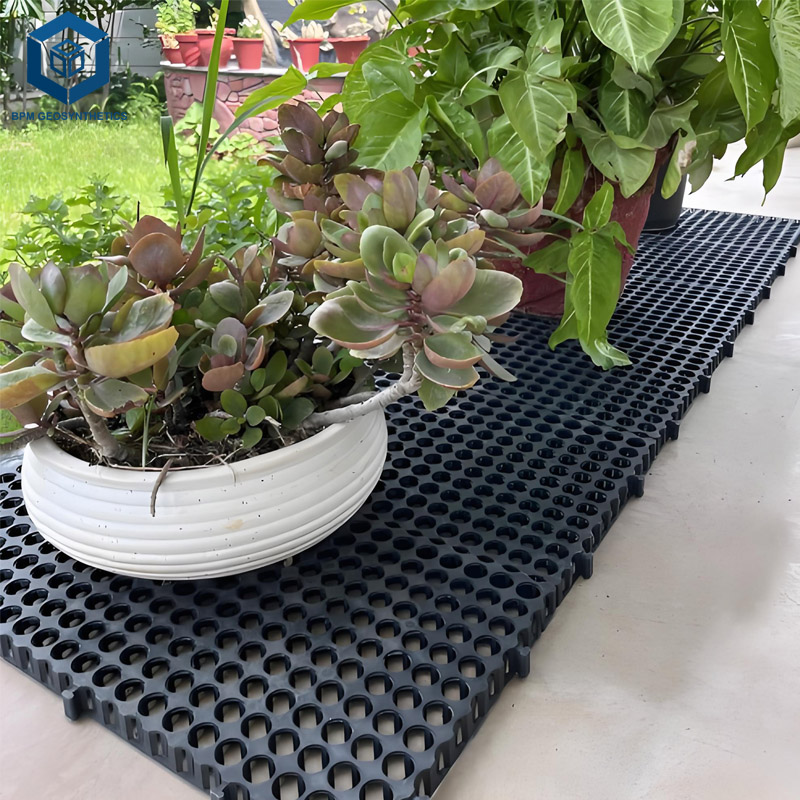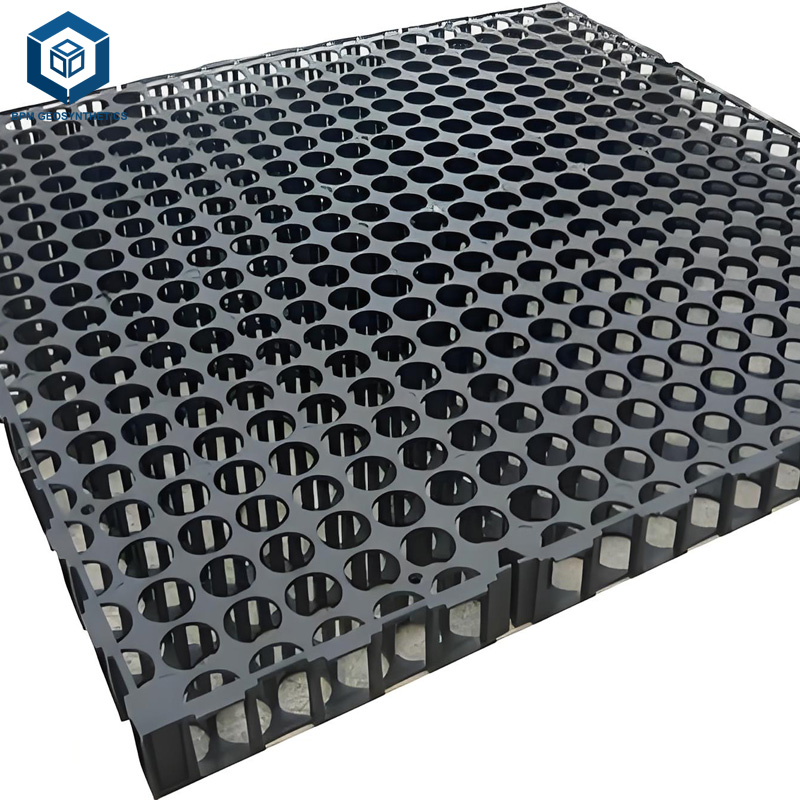Landscape Drain Cell
Landscape drain cell is high-performance, modular drainage structures in particular engineered to decorate stormwater management, root aeration, and structural safety in each residential and business landscaping.
- Efficient Drainage & Water Retention Balance:While making sure speedy elimination of extra water, the mobilephone format retains adequate moisture to minimize irrigation frequency—supporting water conservation desires and greater sustainable landscaping practices.
- Fast and Flexible Installation:Lightweight and modular in design, panorama drain cells are effortless to transport, cut, and collect on-site, decreasing labor prices and permitting bendy integration into any panorama layout.
- Custom Sizes & OEM Services:We provide more than a few telephone heights and configurations to meet extraordinary venture requirements. Custom packaging, and specs are additionally on hand upon request.
1. Landscape Drain Cell
Landscape Drain Cell is a drainage device product used for panorama greening, composed of high-density plastic gadgets with a honeycomb structure, in particular designed to enhance soil drainage and air circulation, and shield plant roots from the results of waterlogging and hypoxia. It is broadly used in city greening, horticultural design, and development initiatives via enhancing drainage efficiency, stabilizing soil, and advertising wholesome plant growth.
2. Landscape Drain Cell Design and Materials
Landscape Drain Cells are usually made of polyethylene (PE) or polypropylene (PP) plastic materials, which have excessive sturdiness and UV resistance. Each drainage unit adopts a honeycomb structure, which can accommodate moisture and enhance ventilation, supporting the soil hold gorgeous humidity and air circulation.
3. Core features of Landscape Drain Cell
3.1 Improving drainage efficiency
The Landscape Drain Cell, with its special honeycomb structure, can correctly dispose of extra moisture and forestall water accumulation. They supply a channel for dispersing water go with the flow and rapidly draining, making sure that the soil constantly keeps an suitable moisture stage instead than being too wet.
3.2 Optimizing soil permeability
The honeycomb sketch now not solely promotes water flow, however additionally helps air go with the flow in the soil. This is essential for the breathing of plant roots, mainly in heavy soil or areas susceptible to waterlogging, correctly decreasing root hypoxia.
3.3 Preventing soil erosion
The shape of Landscape Drain Cell can stop water float from scouring the soil surface, lowering soil erosion and loss, specially appropriate for use on slopes or unstable soils, making sure the balance of panorama design.
4. Application of Landscape Drain Cell
4.1 Urban Greening Project
Landscape Drain Cells play an vital position in city parks, road inexperienced belts, and roadside tree planting. It now not solely helps to enhance the survival price of plants, however additionally correctly reduces waterlogging troubles in inexperienced belts and continues vegetation health.
4.2 Greening of roofs and balconies
In rooftop greening and balcony gardens, Landscape Drain Cell a steady drainage device to forestall flooding. Its portability and effectivity make it an best preference for rooftop gardens and vertical greening systems.
4.3 Landscape Water Pools and Artificial Lakes
Landscape Drain Cells can additionally be utilized to aquatic plant areas, such as panorama swimming pools and synthetic lakes. It helps to keep soil steadiness round the pool, forestall water go with the flow from washing away the subsoil, and make sure precise increase of aquatic plants.
4.4 Sports stadiums and golf courses
Landscape Drain Cells are broadly used in the building of lawns and walking tracks in golf publications and sports activities venues. It helps preserve the permeability of garden soil, making sure the long-term steadiness of the sports activities discipline and the boom of tremendous lawns.
5. Technical parameters of panorama drainage pool
5.1 Materials and Specifications
Landscape Drain Cells are frequently made of high-density plastics such as polyethylene (HDPE) or polypropylene (PP), which have excessive mechanical strength, durability, and stability. The familiar specification is 40cm x 40cm, and the thickness can be personalized in accordance to distinct needs.
5.2 Bearing Capacity
The carrying ability of Landscape Drain Cells can attain over 2000 kilograms per rectangular meter, appropriate for excessive load environments such as city inexperienced spaces, sports activities venues, and lawns.
5.3 Drainage Capacity
The drainage pace of every unit can attain 10-20L/h per rectangular meter, and the fast drainage capability can shortly drain when a massive quantity of rainwater accumulates, fending off water accumulation.
6. Common issues with Landscape Drain Cell
6.1 Is Landscape Drain Cell appropriate for all soil types?
Landscape Drain Cell is appropriate for most soil types, particularly for soils with negative drainage potential and convenient waterlogging. For sandy or rocky soils, it is advocated to use them collectively with different soil enchancment substances to beautify the boom surroundings of plants.
6.2 Can it be established on sloping land?
Yes, Landscape Drain Cell is in particular appropriate for unstable terrain such as slopes and slopes, which can correctly limit soil erosion and keep soil stability. It is appropriate for hillside greening and horticultural design.
6.3 Does Landscape Drain Cell require one-of-a-kind maintenance?
The Landscape Drain Cell machine is handy to maintain, broadly speaking by means of commonly cleansing and checking the drainage feature to forestall blockages and water accumulation. It has robust sturdiness and usually does now not require distinct maintenance.
6.4 Is appropriate for large-scale panorama projects?
Landscape Drain Cell is tremendously appropriate for large-scale panorama projects, such as city parks, public inexperienced spaces, sports activities fields, golf courses, etc., and can meet the drainage wants of giant areas of land.











